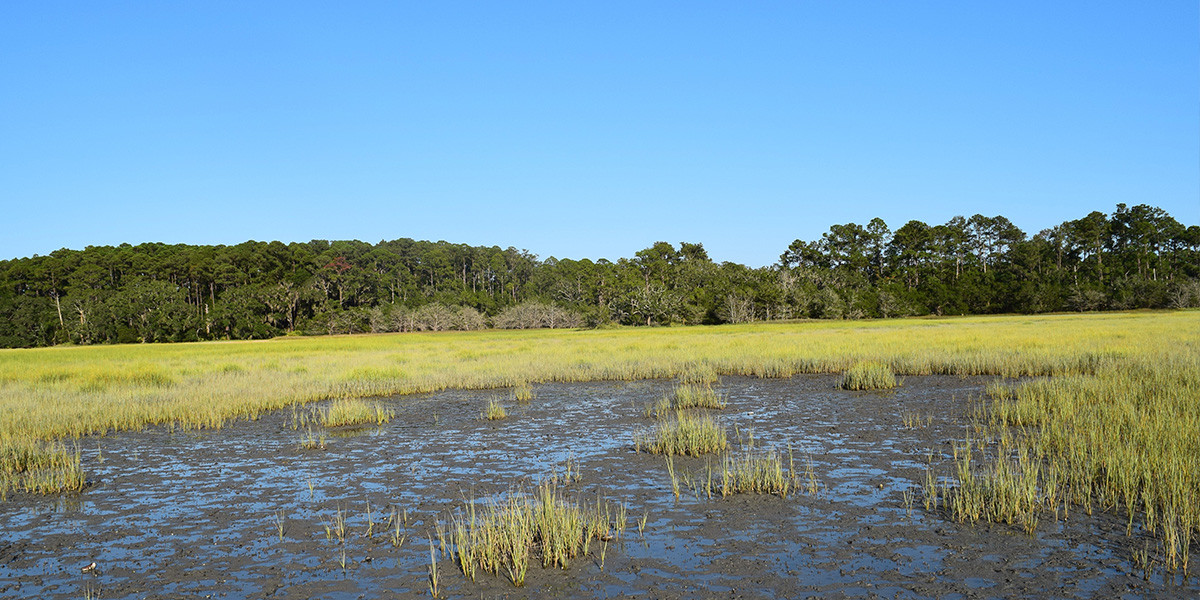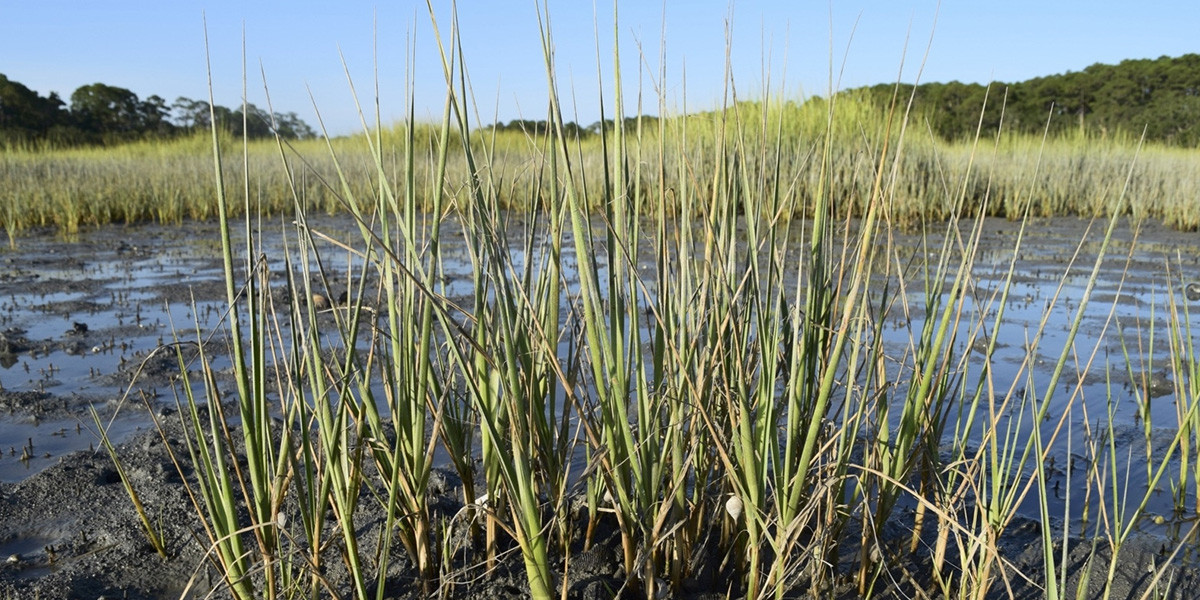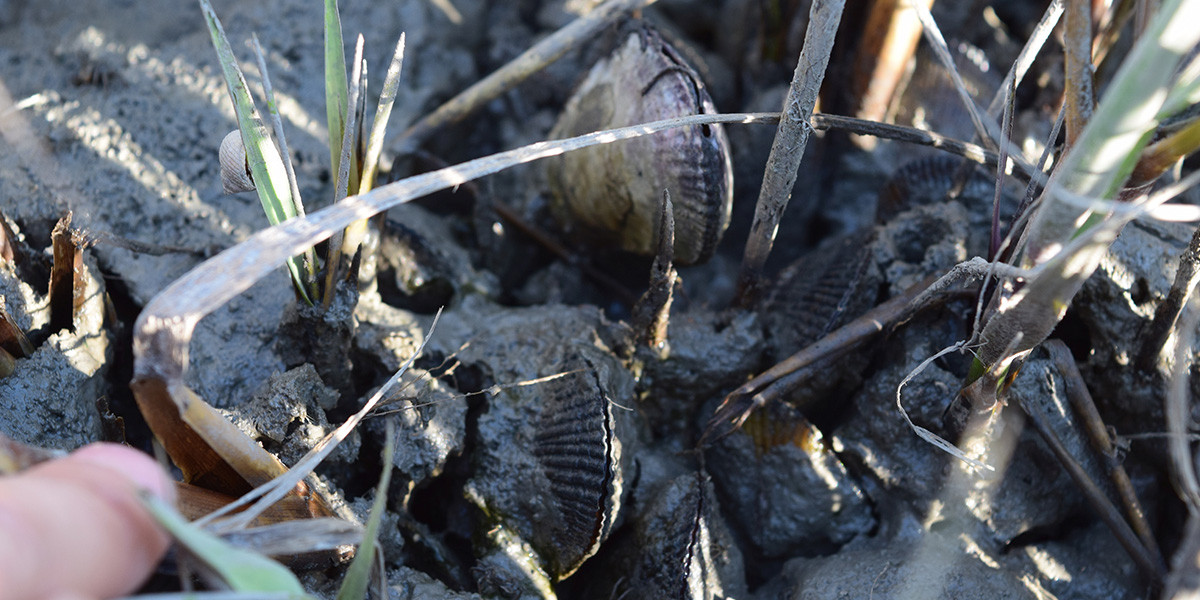Mussels speed up saltmarsh recovery after long droughts
The American tidal flats experience the effects of climate change to a much greater degree than the Dutch mudflats. Droughts cause American cordgrass, the most dominant species of plants, to die off on a large scale, turning the mudflats into a chequered landscape of bare patches and patches still covered by the grass. After such a period of drought, small mussel colonies – hills about half a metre in diameter – prove to be crucial to the recovery of the patches where the cordgrass died off. The vegetation on these hills remains healthy because the mussels make small burrows in the soil that retain water and thus keep salinity levels lower. This helps the cordgrass between the mussels to survive during droughts when vegetation elsewhere on the mudflats dies off because of extremely high levels of soil salinity.
“The islands covered by vegetation are very conspicuous”, says Christine Angelini from the University of Florida, the American project leader. “But they also prove to be crucial to the recovery of the mudflats after long periods of drought; the vegetation colonizes patches where the cordgrass died off from the islands that are still covered by mussels and cordgrass”.
Mathematical Model
“In order to understand the significance of the islands for the recovery of the mudflats, we developed a mathematical model for the American mudflats”, says Johan van de Koppel from NIOZ. “This model shows that with the help of the mussel-cordgrass islands the bare mudflats recover an order of magnitude faster: the mudflats then recover in about 10 years, where without the mussels it would have taken over 100 years”.
Significance for the Netherlands
“In the Netherlands, mussels cannot be found on the mudflats”, says Prof. van de Koppel, “which means that the results cannot be directly applied to the Dutch situation. But it is remarkable that even though mussels are important to both the Dutch economy and biodiversity, we hardly know how important the mussels as well as other reef-building species are to the resilience of the Wadden Sea with regard to climate change". Tjisse van der Heide from Radboud University adds: “There has been lots of research worldwide showing the importance of collaboration between species, such as mussels and cordgrass, for biodiversity. Mussel and oyster beds are the coral reefs of the Dutch coast and they form one of the mainstays of biodiversity in the Dutch coastal waters.”
More information
Full reference to article:
Angelini, Christine, John N. Griffin, Johan van de Koppel, Leon P. M. Lamers, Alfons J. P. Smolders, Marlous Derksen-Hooijberg, Tjisse van der Heide, Brian R. Silliman, 2016. ‘A Keystone Mutualism Underpins Resilience of a Coastal Ecosystem to Drought’. Nature Communications, Doi: 10.1038/NCOMMS12473
Scientific contact persons:
Johan van de Koppel, Tjisse van der Heide (RU Nijmegen)
Communication contact:
Jan Boon (also for pictures in high resolution)


